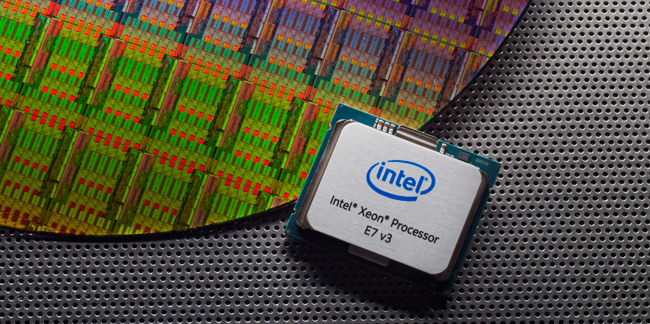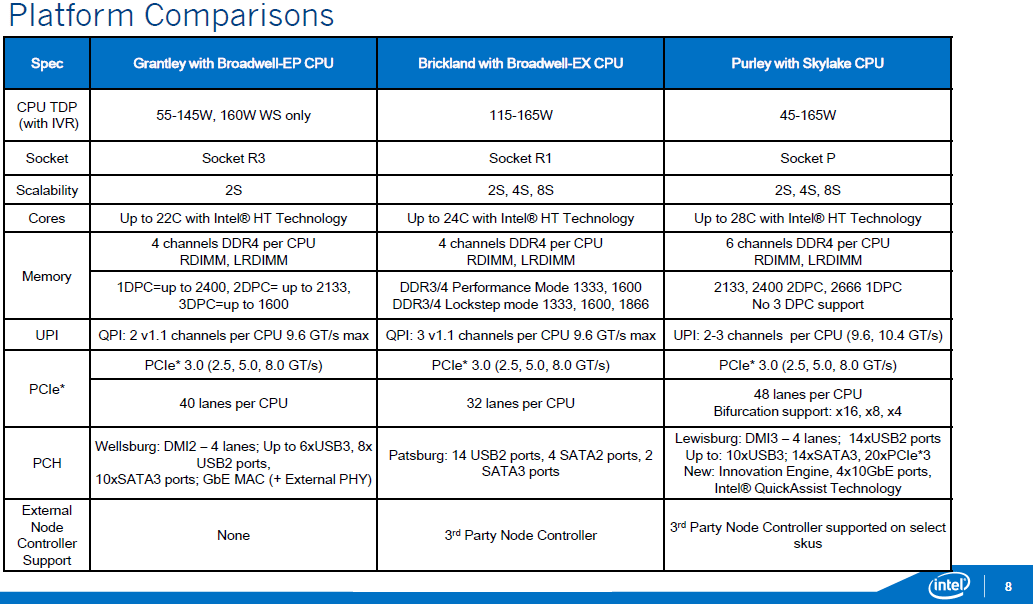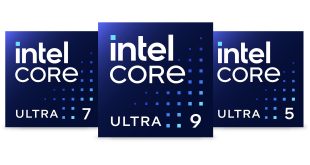Intel Corp. has slightly re-scheduled release dates for its upcoming Xeon E5 v4 and Xeon E7 v4 central processing units for servers. Instead of late 2015, the world’s largest maker of microprocessors will launch its new server CPUs in the first half of 2016. The reasons for the delay are unclear, but Intel has delayed various chips made using 14nm fabrication process for a number of times.
The new Xeon E5 v4 2600-series “Broadwell-EP” central processing units with up to 22 cores for single-socket and dual-socket servers will be released in Q1 2016, according to CPU-World, which cites sources with knowledge of the matter. The Xeon E5 v4 4600-series chips for servers with up to four sockets will be launched in the Q2 2016. The processors will integrate quad-channel DDR4 memory controller that will support effective memory clock-rates up to 2400MHz. The chips will feature 55W – 160W thermal design power.
The higher-end Xeon E7 v4 “Broadwell-EX” central processing units for real-time analytics, mission-critical and other advanced machines with up to eight sockets will be released in the second quarter of next year. The chips will integrate up to 24 cores as well as a large last level cache (up to 60MB, according to unofficial information). The CPUs will feature two dual-channel DDR3/DDR4 controllers that will work with memory modules via special scalable memory buffers (SMBs) at up to 1866MHz effective clock-rates.
The Xeon E5 and E7 “Broadwell” microprocessors for servers should be drop-in compatible with existing “Grantley” and “Brickland” platforms and are not expected to bring a lot of innovations, except support for TSX instructions, some custom features for select clients, DDR4 memory at 2400MHz clock-rate as well as some other enhancements. Still rather substantial increase of core-count compared to existing CPUs will make the new processors significantly faster in numerous applications. Besides, usage of 14nm process technology could bring down their power consumption and/or increase their frequencies.
Intel generally releases server-class Xeon processors noticeably later than client chips based on the same micro-architecture. Server makers and datacentre owners want to ensure that the new microprocessors work fine in different configurations, which requires a lot of tests and evaluations before selling new machines or deploying them.
Intel did not comment on the news-story.
Discuss on our Facebook page, HERE.
KitGuru Says: While the delay is not something that chipmakers or server makers are glad about, it should be noted that it will hardly materially affect Intel’s financial results. The company continues to dominate the server market with 98 – 99 market share as it simply has no rivals.
 KitGuru KitGuru.net – Tech News | Hardware News | Hardware Reviews | IOS | Mobile | Gaming | Graphics Cards
KitGuru KitGuru.net – Tech News | Hardware News | Hardware Reviews | IOS | Mobile | Gaming | Graphics Cards





We hope Zen and A72 or Zen+ and Ares changes this. I love Intel but i love ARM and AMD and Nvidia too.
Technology is great. Heck, i even love Imagination Technology.
Is it not about time that the standard consumer i7’s used at least 6 cores ? we seem to have been stuck with quad core for about a decade ! I’m sure it was the intel core 2 quads that arrived first back around 2007ish.
I really wish intel would pick up their game, I don’t know if they are holding back to give amd a chance or if it’s because they simply don’t have to advance the tech much these days due to no competition,but really it’s getting beyond a joke now.
Talk to the software DEVS, they will tell you firsthand that coding out more than 4 cores has huge diminishing returns and is HARD to do by hand. Compilers can do a ”ok” job but again the ROI is not even close to 70%.
only highly parallel tasks such as imaging, data mining, highly scalable solutions like SQL really benefit from massive coer counts. common desktops/gaming rigs … not much benefit at all. in fact as the 5775c shows us.. more on die cache is better than more than 4 cores.
Interesting food for thought, thanks for the info Topher.
Allow me to show you a ^excellent way to earn a lot of extra money by finishing basic tasks from your house for few short hours a day — See more info by visiting >MY____^(DISQUS)^____ID+=